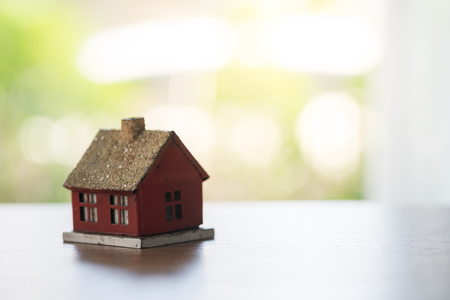Maximizing Space with Smart Layouts
Living in a tiny house means every inch counts. To make the most of your limited square footage, smart and flexible layouts are key. Whether youre building from scratch or redesigning an existing space, thoughtful planning can help you achieve a home thats both functional and comfortable.
Explore Multi-Purpose Floor Plans
In a tiny house, rooms often serve more than one purpose. Instead of having separate areas for living, working, and sleeping, combine them in creative ways. A dining table can double as a workspace. A sofa can convert into a bed. Even staircases can offer storage underneath.
Common Multi-Use Ideas
| Space | Primary Use | Secondary Function |
|---|---|---|
| Loft Area | Sleeping | Storage or Reading Nook |
| Sofa Bed | Sitting Area | Guest Bed |
| Dinning Table | Eating | Workstation or Craft Area |
| Stairs with Drawers | Access to Loft | Shoe or Clothes Storage |
Create Open Zones Instead of Separate Rooms
An open-concept layout helps your tiny home feel larger. Use visual dividers like rugs, lighting, or shelving to define different zones without building walls. This keeps the space airy while still giving each area its own identity.
Clever Zoning Tips:
- Use foldable partitions: Great for privacy when needed but easy to tuck away.
- Add vertical elements: Tall bookshelves can divide space and store items at the same time.
- Select dual-purpose furniture: Ottomans with storage or wall-mounted desks save room and add function.
The Importance of Vertical Space
Tiny homes often lack floor space, but they usually have plenty of height to work with. Don’t forget to go vertical. Think tall storage units, hanging kitchen racks, and lofted beds. These solutions free up ground space and keep things organized.
Tiny Home Tip:
If your ceilings are high enough, consider adding a sleeping loft above your main living area. It’s one of the best ways to free up room below for daily activities.
2. Storage Solutions That Work
Living in a tiny house means making the most out of every square inch. Smart storage is key to keeping your space functional and free from clutter. Here are some practical tips to help you stay organized without sacrificing style or comfort.
Built-In Cabinets
Built-in cabinets are one of the best ways to maximize vertical space. Whether it’s a custom kitchen unit or a floor-to-ceiling bookshelf, built-ins keep everything tucked away neatly. They also give your home a cleaner, more streamlined look compared to bulky standalone furniture.
Where to Use Built-Ins:
| Location | Built-In Idea |
|---|---|
| Kitchen | Wall-mounted pantry and spice racks |
| Living Area | Shelving around windows or seating areas |
| Bathroom | Niches for toiletries and towels |
| Bedroom | Closets integrated into walls |
Under-Bed Storage
The space under your bed is prime real estate in a tiny home. Drawers, sliding bins, or even lift-up mattress platforms can transform this area into hidden storage for clothes, shoes, linens, or seasonal items.
Tip:
If youre designing from scratch, consider building a platform bed with deep drawers or compartments underneath—it adds function without taking up extra floor space.
Convertible Furniture
Tiny homes thrive on multi-functional pieces. Convertible furniture like sofa beds, drop-leaf tables, and ottomans with hidden compartments allow you to switch between living modes easily while doubling as storage solutions.
Popular Convertible Options:
| Furniture Piece | Main Function | Add-On Feature |
|---|---|---|
| Sofa Bed | Couch | Pulled out into sleeping area |
| Coffee Table with Storage | Coffee Table | Lifts open for hidden compartment inside |
| Dropped-Leaf Table | Dinner Table/Desk | Sides fold down when not in use |
| Ladder with Hooks/Shelves | Bunk Access or Decor Ladder | Adds hanging/storage functionality |
No matter how small your home is, the right storage solutions can make it feel spacious and comfortable. With built-in cabinets, smart use of under-bed space, and convertible furniture that does double duty, you can enjoy all the benefits of tiny house living without feeling cramped.

3. Choosing the Right Materials and Finishes
When it comes to designing a tiny house, selecting the right materials and finishes is key to maximizing efficiency, comfort, and longevity. Since space is limited and every square inch counts, the materials you choose should be lightweight, durable, and environmentally friendly—especially if your tiny home is mobile.
Why Material Choice Matters in Tiny Living
Unlike traditional homes, tiny houses often face more wear and tear due to their compact layout and potential for movement. That’s why materials need to withstand frequent use while keeping weight to a minimum. A lighter build also improves fuel efficiency when towing your home on wheels.
Top Material Considerations
| Material Type | Best For | Benefits |
|---|---|---|
| Plywood or OSB | Walls & Subflooring | Lightweight, cost-effective, easy to install |
| Bamboo | Flooring & Wall Accents | Sustainable, durable, moisture-resistant |
| Recycled Metal | Roofing & Siding | Long-lasting, fire-resistant, low maintenance |
| Cork | Insulation & Flooring | Naturally insulating, sound-absorbing, renewable resource |
| Composite Panels | Interior Walls & Cabinetry | Lightweight, strong, available in various finishes |
Eco-Friendly Finishes That Make a Difference
Tiny house living often goes hand-in-hand with sustainability. Choosing low-VOC paints, natural sealants like beeswax or linseed oil, and reclaimed wood can help keep your indoor air quality safe and reduce environmental impact. These finishes not only look great but also support a healthier lifestyle.
Tips for Selecting Sustainable Finishes:
- Look for Green Certifications: Products labeled GREENGUARD or FSC-certified are safer and eco-conscious choices.
- Go Natural: Use clay-based paints or milk paint for walls—they’re non-toxic and provide a unique finish.
- Reuse When Possible: Salvaged wood and repurposed tiles add character while reducing waste.
Balancing Style with Functionality
The right materials can enhance both aesthetics and usability. For example, choosing whitewashed plywood can brighten up interiors while keeping weight down. Using stainless steel or butcher block countertops adds durability without sacrificing style.
Quick Tips:
- Avoid heavy stone or tile unless absolutely necessary.
- Select foldable or multi-use surfaces made from sturdy yet light composites.
- Add texture through fabrics and wall panels instead of heavy decor items.
Selecting smart materials doesn’t just make your tiny house beautiful—it makes it smarter to live in. Focus on options that support mobility, sustainability, and day-to-day resilience to get the most out of your small space living experience.
4. Energy Efficiency and Sustainability
Living in a tiny house is not just about saving space—its also a great opportunity to live more sustainably and reduce your environmental footprint. By choosing the right systems and appliances, you can cut down on utility costs while making your home more eco-friendly. Here are some practical tips to help you design a more energy-efficient tiny home.
Solar Panels: Powering Your Home Naturally
Solar panels are one of the most popular energy solutions for tiny homes. Theyre compact, reliable, and can significantly lower (or even eliminate) your electricity bill. Depending on your location and sunlight availability, a basic solar setup can power lights, small appliances, and even heating or cooling systems.
Benefits of Solar Panels
| Benefit | Description |
|---|---|
| Lower Utility Bills | Reduces or eliminates monthly electricity costs |
| Energy Independence | No need to rely on the grid, great for off-grid living |
| Eco-Friendly | Generates clean energy with no emissions |
Composting Toilets: A Smart Waste Solution
A composting toilet is an excellent choice for tiny homeowners looking to live more sustainably. These toilets don’t require plumbing or water hookups, making them perfect for remote locations or off-grid living. They break down waste into compost using natural processes, reducing water usage and sewage output.
Main Advantages of Composting Toilets
- Saves up to 6 gallons of water per flush avoided
- Lowers maintenance by eliminating septic needs
- Simplifies installation with no plumbing required
Energy-Efficient Appliances: Do More with Less
Tiny homes demand smart appliance choices. Look for Energy Star-rated items that use less electricity but still perform well. Compact versions of refrigerators, washer-dryer combos, induction cooktops, and low-flow showerheads are all ideal for maximizing efficiency without sacrificing comfort.
Top Energy-Efficient Appliance Picks
| Appliance Type | Recommended Feature |
|---|---|
| Refrigerator | Compact size, Energy Star certified |
| Laundry Unit | Washer-dryer combo with low water usage |
| Cooktop | Induction technology for faster, safer cooking |
| Water Heater | Tankless or solar-powered models |
Merging smart design with sustainable technology makes tiny house living both practical and planet-friendly. By integrating solar panels, composting toilets, and efficient appliances into your setup, youre not only cutting down on costs—you’re also creating a greener way of life.
5. Creating Comfort in Compact Spaces
Living in a tiny house doesnt mean you have to sacrifice comfort. By focusing on smart lighting, proper insulation, and efficient ventilation, you can create a cozy and inviting atmosphere that feels just as good as a full-size home. Heres how to do it:
Lighting: Brighten Up Without Taking Space
Lighting has a huge impact on how spacious and comfortable your tiny home feels. Natural light is ideal, but you’ll also need artificial lighting for evenings or cloudy days.
Tips for Effective Lighting:
| Lighting Type | Best Use | Why It Works |
|---|---|---|
| LED Recessed Lights | Ceilings & under cabinets | Saves space and energy-efficient |
| Wall Sconces | Hallways & bedrooms | No floor space needed, adds ambient light |
| Natural Light (Windows & Skylights) | Main living areas | Makes the space feel larger and more open |
| Smart Bulbs | Throughout the house | Adjust brightness and color to suit mood and time of day |
Insulation: Stay Comfortable Year-Round
Tiny homes are more exposed to temperature changes because of their size. Good insulation keeps your indoor environment stable and reduces heating and cooling costs.
Popular Insulation Options:
- Spray Foam Insulation: Great for tight spaces and provides excellent thermal resistance.
- Rigid Foam Boards: Easy to install in floors, walls, and ceilings.
- Batt Insulation: Cost-effective and works well if you have standard framing.
Bonus Tip:
Add insulated window coverings to keep the heat in during winter and out during summer.
Ventilation: Keep Air Fresh and Healthy
A small space can quickly feel stuffy without proper airflow. Good ventilation not only improves air quality but also prevents moisture buildup that can lead to mold or mildew.
Ventilation Techniques:
- Install an HRV System (Heat Recovery Ventilator): This system brings in fresh air while maintaining indoor temperatures.
- Use Exhaust Fans: Place them in kitchens and bathrooms to remove humidity and odors.
- Add Operable Windows: Windows that open allow natural airflow when weather permits.
- Ceiling Fans: Help circulate air evenly throughout the space.
By carefully planning your lighting, insulation, and ventilation systems, even the smallest of homes can offer big-time comfort. These strategies not only make your tiny house more livable but also improve energy efficiency and long-term satisfaction.


